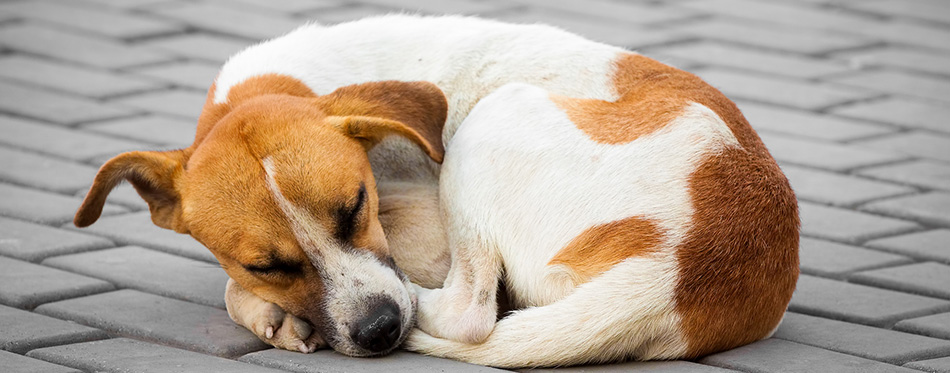Have you ever seen a stray dog, scared and alone in the middle of a busy street and worried about its well-being? If you have, you’ve probably tried to pick it up and get it to safety. Or maybe you’ve wanted to but weren’t sure how to actually do it? Either way, we’ve created this article specifically for you and other animal-loving folks. Here, we teach you all about stray pets, including what to do with them, where to take them, and whether or not you should keep them for yourself.
Safety First
Let’s start with the basic and most important thing of all – safety. And by this, we mean threefold safety:
- You own safety
- The safety of others
- The dog’s safety
If you see a dog running loose near traffic, for instance, you don’t want to brake abruptly to pick it up. You may cause an accident and hurt yourself and/or other people or even the dog itself this way, so any sudden action should be out of the question. Instead, what you want to do is be careful and go slow: check rear-view mirror before braking, turn on your signal and pull off the road. Don’t forget the hazard lights as well. Then, and only then, think about catching the dog.
If you’re not able to safely pull over near the animal, that’s okay. Take note of where you saw them and keep driving until you can pull over safely. Then, either come back to get them or call animal control to give them as much detail as possible about where you spotted the dog.

Capture With Care
If you’re able to approach the dog safely, try to capture and contain them carefully and gently. A stray animal is usually frightened, possibly injured or sick, so you do have to be careful here. Hurt animals tend to behave unpredictably, especially if they consider you threatening, so it’s worth repeating here that no sudden moves are allowed.
Instead, approach the dog slowly and cautiously while speaking in a soft, reassuring voice. If you have food or dog treats with you, you can use it to coax the dog into approaching you. Once they come to you, keep speaking quietly and calmly while feeding or petting them. However, don’t try to pet them if they look frightened! Firstly, you want to “disarm” the animal by being very gentle – speak calmly to reassure them, give them a little food or water, and once they start relaxing, you can try petting them. A word of caution though: if the animal has been alone for a long time, they may have lost the ability to trust people, in which case, they will not want to be petted at all. You will have to use your own judgment here and access the situation as realistically as possible.
If possible, restrain the dog. Either secure it with a dog leash or contain them in a fenced yard/large box. Once secured, lure or place the animal into your car. While you may be able to lure the dog inside your vehicle unrestrained, driving with a strange dog who can move, scratch and bite next to you or behind you is a really bad idea. If the dog has never been driven in a car before, they may become frantic or aggressive while you’re behind the wheel, and you definitely want to avoid that. However, if the dog seems peaceful and is obvious they’ve just run away from their home (they look well-fed, are relatively clean and have a collar), you may be able to drive with them unrestrained. It’s still a risk, though, so we recommend restraining them.
If you cannot capture and contain the animal yourself, do not worry – that’s what animal control is there for. If the dog seems aggressive or maybe too frightened for you to restrain them, do not put yourself in danger trying to capture them. Simply find out the number of your local animal control, call them and give them the exact street address of where you and the dog are, or the address of where the dog was last seen. If you live in a rural area and don’t have a local animal control agency, call the police. If you can, stay on the line with the dispatcher and keep an eye on the dog until help arrives.
Transport to Safety or Call Authorities
So, you’ve managed to capture and contain the animal – now what? Where to take a stray dog is actually up to you – you can take them to a 24-hour animal shelter or keep them for yourself if they have no owner. Because we’ll talk about the latter scenario (adopting a stray) a little bit later in this article, let’s focus now on transporting the dog to safety.
Firstly, you want to check the dog for ID tags by looking at their collar and tag. If they have all the necessary information, call the owner and either drive the dog to them or let them know where they can pick their pet up. If the dog doesn’t have an ID collar, you can take them to a nearby vet to be scanned for a microchip. Nowadays, most vet offices have microchip scanners because more and more animals are getting chipped, so usually, the vet will scan the dog for free and be able to tell you immediately the owner’s contact information.
If the dog doesn’t have tags and is not chipped, you’ll want to find out the address of the nearest animal shelter, or alternatively, a veterinary hospital for treatment if the dog is sick or injured. When pets get lost, owners typically start by looking at the nearest animal shelters, so transporting them there is their best chance to be reunited with their owners. Because many shelters have to deal with huge numbers of lost animals, they often have inaccurate reports of lost and found animals. This is also because many people cannot give an accurate description of the animal they have found. So, if you want to help and do your part, you can ask to post the picture of the found dog in the shelter’s computer database. This would accomplish two things: allow you to hold the lost pet and take care of it, and also allow the owner to find the dog at the shelter via the photo.
What To Do With A Stray Dog
One of the most common questions about a stray dog pickup is: can I adopt it? While adopting a lost puppy or an adult dog sounds really nice (and it often is!), this is not always the best scenario for the animal. Many stray dogs have someone out there missing them and desperately trying to find them, so returning them to their rightful owner(s) would be, of course, the best course of action. So, before you decide to adopt a stray pup, take every possible step to locate its family, including:
- Checking for ID tags
- Checking if they’re microchipped
- Posting their picture in several animal shelter’s databases
- Posting fliers around the area where the dog was found
- Distributing the fliers to local veterinary clinics
If you’ve exhausted all the possibilities and it seems obvious that no one is looking for the dog, you may consider adopting it.

Adopting a Stray
If you’re certain the dog doesn’t belong to anyone, adopting them is always an option. Here is how you can go about that.
- Take the animal to the vet: to take good care of your new foundling, it’s important to let an expert examine them. They may be sick and need a special diet and care in order to be healthy and happy, or they may be injured but not show any obvious signs of pain. There is another reason why going to the vet is essential – vaccines. If the dog was never anyone’s pet, they are probably not vaccinated, and it’s important that they get their shots if they are to be healthy and safe to be around. Also, they need to be treated for fleas and parasites.
- Introduce them to the household slowly: whether you live alone, with other people and/or other animals, you want to introduce your new pooch slowly and carefully to their new environment. This is especially important if you own other animals. You’ll probably want to keep the new dog separated from other pets in the beginning, or until they become a bit more comfortable with their new home. Feed the dog generously, show them where their water bowl is, where they can sleep, and most importantly of all – shower them with attention so they can become comfortable with you and their new home.
- Take good care of them: make sure you can take good care of your new pup. They will need annual vet checkups, quality dog food, regular flea and heartworm medication, a comfy place to sleep, and lots of love. If you cannot fulfill some of these basic needs, adopting a stray dog may not be the best solution neither for you or the dog. Dogs also need regular physical activity, so make sure you can walk them at least once every other day (but once or twice a day is preferable). Finally, don’t forget to have fun! Animals are wonderful and loving companions and you’ll be making a lifelong friend in your new foundling, so cherish every moment with them!
Check out our article on the Best Flea Collars for Dogs.

